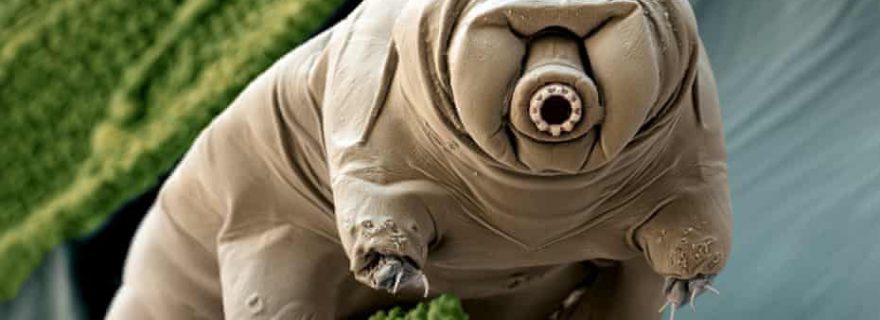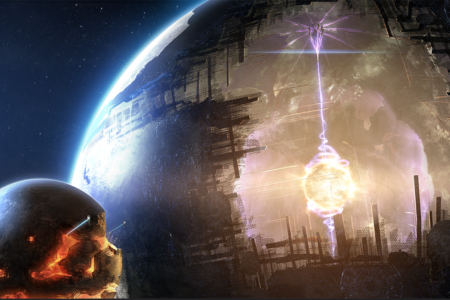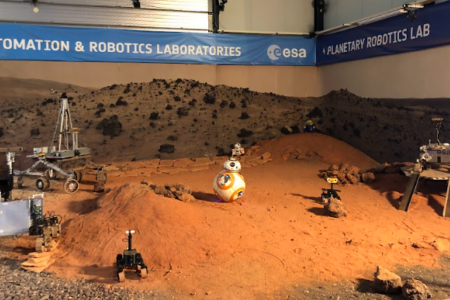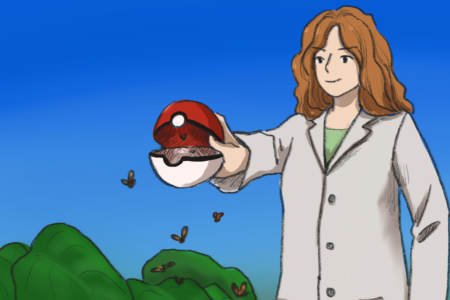Tardigrades on the Moon
Imagine traveling to the moon, crashing, and surviving the impact as well as the vacuum of space. It might seem impossible, but it happened to a group of tardigrades on April 11th, 2019.
Nearly impossible to see without a microscope but abundant across the earth, this group of animals is specialized in surviving under the most extreme conditions. Some even call them the most resilient organisms on earth. How do they do this and what will happen to the tardigrade community on the moon?
To answer these questions, it is important to know what a tardigrade is exactly. These half millimeter sized invertebrates look quite alien with their segmented body and eight legs. Unlike other small invertebrates, tardigrades move slowly, which is why they got the name “tardigrade”, which means ‘slow mover’ in Latin. They take their time moving from one spot to another, eating vegetation such as mosses as well as other small invertebrates. The way they move as well as their strange but cute appearance has granted them the nickname “water bear”. The phylum tardigrada is divided into multiple classes and more than a thousand species, which can be found all over the world.
The most interesting property of tardigrades is their ability to survive extreme environments, which also granted them their spot on the moon. These small animals can be frozen in ice at temperatures of -200 Celsius. They can be boiled, suffocated, or crushed and still come out unscathed. They are even resistant to high amounts of ultraviolet radiation. The trick to this invulnerability is the transformation their bodies undergo when they encounter harsh conditions to live in, which is called cryptobiosis. The animal can change its body chemistry in reaction to the environmental problem it encounters. The body can for example puff or dry up depending on the situation. An example of this is a form of cryptobiosis, called anhydrobiosis. In order to survive, the tardigrade loses up to 97% of the moisture in its body and shrivels up into a so-called “tun state”. In this state the animal cannot grow, eat or reproduce, but is resistant to extreme salinity, drought and temperatures. The tardigrade can survive in this tun state for decades, until the environmental conditions improve. In other cases, the tardigrade can also use anoxybiosis, where it takes up a lot of water if there is a lack of oxygen. Another trick tardigrades use is cryobiosis, in which the animal produces cryoprotectants. Normally, when a body freezes, ice crystals damage the tissue which results in death. Cryoprotectants help the tardigrade survive in extreme cold by preventing the formation of ice crystals .
Due to the aforementioned adaptations, surviving in space for a long period of time is possible for these little animals. Whether you can really call it living is a different question. Tardigrades being in the tun state will not eat, grow, or reproduce. The tardigrades cannot get out of this state without liquid water, which is not present on the moon. Because of this, the tardigrades on the moon will remain in the tun state until we save them, which is highly unlikely, or they might die after a long period of time. All in all, they sure look alien enough to survive the moon, and show how innovative even the smallest life forms can be.
Sources
- https://allyouneedisbiology.wordpress.com/tag/anoxybiosis/
- https://www.microscopemaster.com/tardigrades.html
- https://en.wikipedia.org/wiki/Cryptobiosis
- http://www.eartharchives.org/articles/tardigrade-genome-reveals-secrets-of-their-toughness-and-evolution/
- https://www.livescience.com/moon-tardigrades-future.html
- https://www.livescience.com/57...
- https://animals.howstuffworks....
- https://www.nature.com/article...






0 Comments
Add a comment